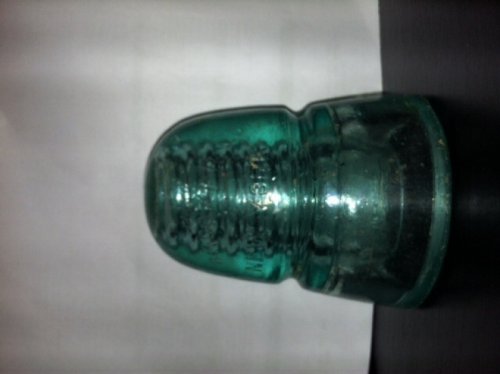bottlerocket
Well-Known Member
- Joined
- Aug 20, 2013
- Messages
- 525
- Reaction score
- 1
- Points
- 16
I found a couple of these insulators today.
They both have the same embossing.
On one side it is embossed W Brookfield New York
On the other side is embossed
Pat Nov 13th 1883
Feb 12th 1884
Does anyone know when these were manufactured?
Thanks

They both have the same embossing.
On one side it is embossed W Brookfield New York
On the other side is embossed
Pat Nov 13th 1883
Feb 12th 1884
Does anyone know when these were manufactured?
Thanks


